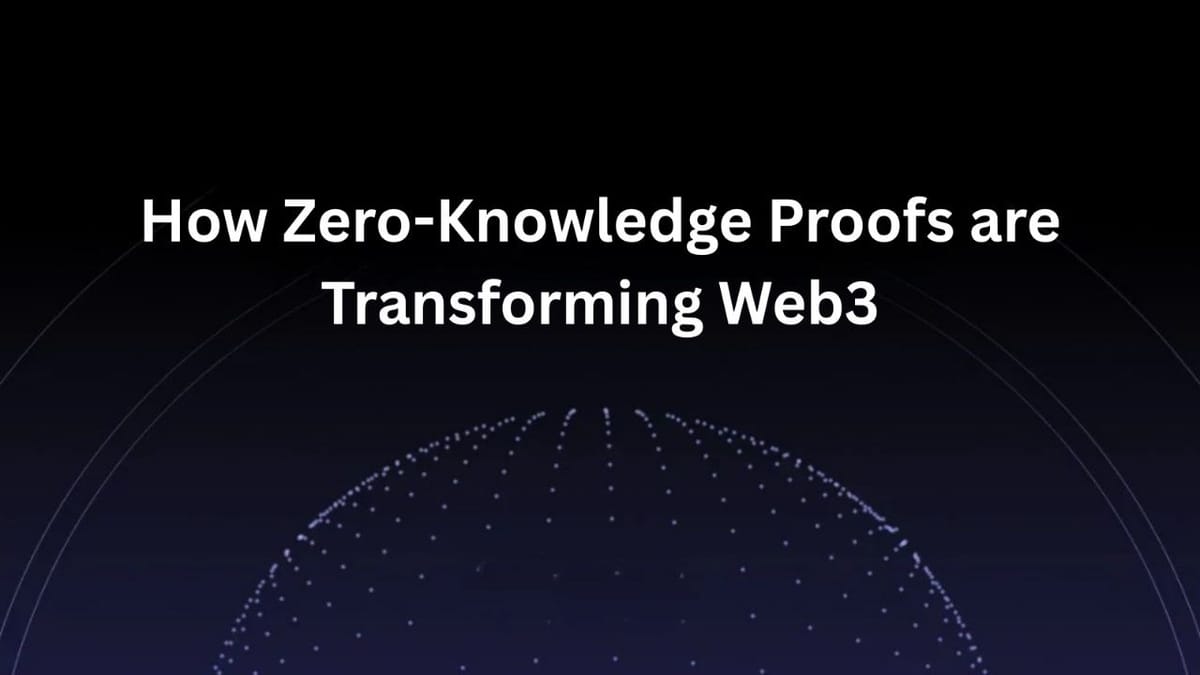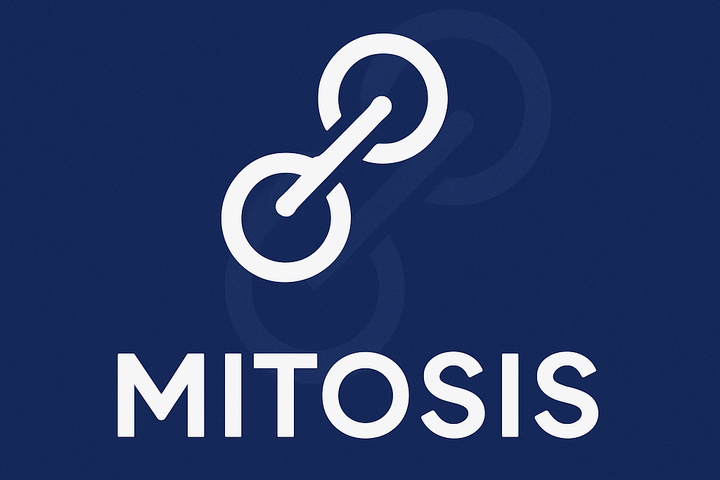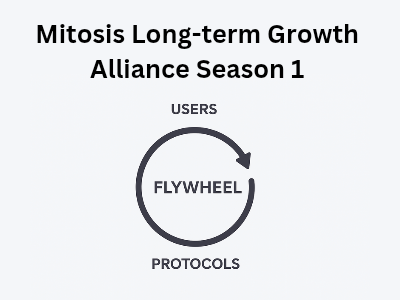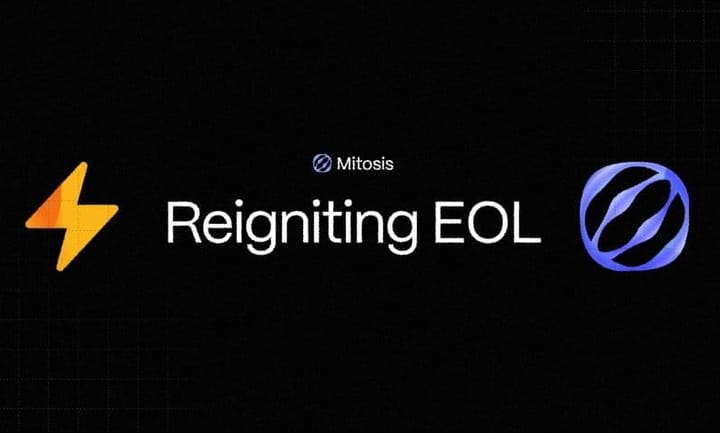How Zero-Knowledge Proofs are Transforming Web3

Introduction
The advent of blockchain technology has ushered in a new era of decentralized applications (dApps) and financial systems. However, as the ecosystem grows, so do the challenges related to scalability, privacy, and security. Zero-knowledge proofs (ZKPs) have emerged as a transformative solution to these challenges, particularly in the context of Web3. This article explores how ZKPs, specifically through technologies like ZK-Rollups and ZK-EVMs, are reshaping the landscape of decentralized finance (DeFi) and gaming (GameFi). We will also compare ZK-Rollups with Optimistic Rollups, examine current projects leveraging ZK technology, and discuss the new use cases that ZKPs unlock.
1. Understanding Zero-Knowledge Proofs
Zero-knowledge proofs are cryptographic methods that allow one party (the prover) to prove to another party (the verifier) that a statement is true without revealing any information beyond the validity of the statement itself. This concept is particularly powerful in the context of blockchain, where privacy and security are paramount.
1.1 Key Features of Zero-Knowledge Proofs
- Privacy: ZKPs enable users to prove their identity or the validity of a transaction without disclosing sensitive information. This is crucial in a world where data breaches and privacy concerns are rampant.
- Scalability: By allowing transactions to be validated off-chain, ZKPs can significantly reduce the load on the main blockchain, enhancing scalability.
- Security: ZKPs provide a high level of security, as they are based on complex mathematical problems that are difficult to solve without the correct information.
1.2 Types of Zero-Knowledge Proofs
There are two primary types of zero-knowledge proofs:
- Interactive ZKPs: These require multiple rounds of communication between the prover and verifier. They are less commonly used in blockchain applications due to their complexity.
- Non-Interactive ZKPs (NIZKPs): These allow the prover to generate a proof that can be verified without further interaction. NIZKPs are more suitable for blockchain applications, as they enable efficient transaction validation.
2. ZK-Rollups vs. Optimistic Rollups
As the demand for scalable solutions in the blockchain space increases, two prominent technologies have emerged: ZK-Rollups and Optimistic Rollups. Both aim to enhance the scalability of Ethereum and other blockchains, but they do so in fundamentally different ways.
2.1 ZK-Rollups
ZK-Rollups bundle multiple transactions into a single proof, which is then submitted to the main blockchain. This process involves the following steps:
- Transaction Aggregation: Multiple transactions are aggregated off-chain.
- Proof Generation: A zero-knowledge proof is generated to validate the aggregated transactions.
- On-Chain Submission: The proof is submitted to the main blockchain, along with a minimal amount of data required to reconstruct the state.
2.1.1 Advantages of ZK-Rollups
- Immediate Finality: Transactions are validated instantly, as the proof guarantees their correctness.
- Enhanced Privacy: Transaction details remain hidden, providing users with greater privacy.
- Reduced Gas Fees: By bundling transactions, ZK-Rollups significantly lower gas fees compared to processing each transaction individually.
2.2 Optimistic Rollups
Optimistic Rollups, on the other hand, operate on the assumption that transactions are valid until proven otherwise. The process involves:
- Transaction Submission: Users submit transactions to the rollup.
- Challenge Period: A challenge period allows users to contest any invalid transactions.
- Fraud Proofs: If a transaction is challenged, a fraud proof is generated to verify its validity.
2.2.1 Advantages of Optimistic Rollups
- Simplicity: Optimistic Rollups are easier to implement and require less complex cryptographic proofs.
- Higher Total Value Locked (TVL): Due to their simplicity, Optimistic Rollups have attracted a larger amount of capital compared to ZK-Rollups.
2.3 Key Differences
3. Current Projects Utilizing ZK Technology
Several projects are at the forefront of implementing ZK technology, each with its unique approach and features. Here, we will explore three notable projects: Polygon zkEVM, zkSync, and StarkNet.
1. Polygon zkEVM
Polygon zkEVM is a layer-2 scaling solution that aims to bring the benefits of ZK technology to Ethereum while maintaining compatibility with existing Ethereum smart contracts. Key features include:
- Ethereum Compatibility: Developers can deploy existing Ethereum dApps on Polygon zkEVM without modifications.
- Scalability: By utilizing ZK-Rollups, Polygon zkEVM can process thousands of transactions per second, significantly reducing congestion on the Ethereum mainnet.
- Low Fees: Users benefit from lower transaction fees compared to the Ethereum mainnet.
2. zkSync
zkSync is another prominent layer-2 scaling solution that focuses on providing a user-friendly experience while leveraging ZK technology. Key features include:
- User -Centric Design: zkSync prioritizes ease of use, allowing users to interact with dApps seamlessly.
- Low Transaction Costs: The platform offers significantly lower fees compared to Ethereum, making it accessible to a broader audience.
- Developer-Friendly: zkSync provides robust developer tools and documentation, enabling easy integration of ZK technology into existing applications.
3. StarkNet
StarkNet is a layer-2 scaling solution that utilizes STARKs (Scalable Transparent Arguments of Knowledge) to achieve high scalability and security. Key features include:
- Scalability: StarkNet can handle a large number of transactions simultaneously, making it suitable for high-demand applications.
- Composability: Developers can build complex applications that interact with each other seamlessly, enhancing the overall ecosystem.
- Security: STARKs provide a high level of security, ensuring that transactions are validated without compromising user privacy.
4. New Use Cases Unlocked by ZK Technology
The introduction of ZK technology opens up a plethora of new use cases in both decentralized finance (DeFi) and gaming (GameFi). Here, we will explore some of the most promising applications.
4.1 Use Cases in Decentralized Finance (DeFi)
- Private Transactions: ZKPs enable users to conduct transactions without revealing their identities or transaction details. This is particularly valuable for users who prioritize privacy in their financial activities.
- Confidential Lending and Borrowing: ZK technology allows users to prove their creditworthiness without disclosing their entire financial history. This can lead to more inclusive lending practices, as users can access loans without exposing sensitive information.
- Decentralized Identity Verification: ZKPs can facilitate secure identity verification processes, allowing users to prove their identity without revealing personal information. This can enhance KYC (Know Your Customer) processes in DeFi applications.
- Private Governance: ZK technology can enable private voting mechanisms in decentralized governance, allowing users to participate in decision-making without revealing their voting preferences.
4.2 Use Cases in Gaming (GameFi)
- Secure In-Game Transactions: ZKPs can facilitate secure and private in-game transactions, enabling players to trade assets without exposing their identities. This enhances the overall gaming experience and fosters trust among players.
- Decentralized Marketplaces: ZK technology can power decentralized marketplaces where players can buy, sell, and trade in-game items with confidence, knowing that their transactions are secure and private.
- Proof of Ownership: ZKPs can be used to prove ownership of in-game assets without revealing the details of the assets themselves. This can enhance the value of digital collectibles and NFTs (Non-Fungible Tokens).
- Fair Play Mechanisms: ZK technology can be employed to create fair play mechanisms in games, ensuring that players cannot cheat or manipulate the system without detection.
5. Challenges and Considerations
While ZK technology offers numerous benefits, it is not without its challenges. Some of the key considerations include:
- Complexity: Implementing ZK technology can be complex, requiring a deep understanding of cryptography and blockchain development.
- User Experience: Ensuring a seamless user experience while integrating ZK technology is crucial. Users may be deterred by complicated processes or high fees.
- Regulatory Concerns: The use of ZKPs for privacy may raise regulatory concerns, particularly in jurisdictions with strict KYC and AML (Anti-Money Laundering) regulations.
- Interoperability: Ensuring that ZK solutions can interact with existing blockchain ecosystems is essential for widespread adoption.
6. Future of ZK Technology in Web3
The future of ZK technology in Web3 looks promising, with ongoing research and development aimed at overcoming existing challenges. As more projects adopt ZK solutions, we can expect to see:
- Increased Adoption: As awareness of the benefits of ZK technology grows, more developers and projects will likely adopt these solutions, leading to a more robust ecosystem.
- Enhanced Privacy Features: Future developments may focus on enhancing privacy features, allowing users to engage in financial activities with greater confidence.
- Interoperability Solutions: Efforts to improve interoperability between different ZK solutions and existing blockchain networks will be crucial for widespread adoption.
- Regulatory Clarity: As ZK technology matures, we may see clearer regulatory frameworks that address privacy concerns while ensuring compliance with existing laws.
Conclusion
Zero-knowledge proofs are poised to transform the Web3 landscape by providing enhanced privacy, scalability, and security. As technologies like ZK-Rollups and ZK-EVMs gain traction, the potential for new use cases in DeFi and GameFi will expand, paving the way for a more secure and efficient decentralized ecosystem. Current projects such as Polygon zkEVM, zkSync, and StarkNet are leading the charge in implementing these technologies, each contributing to the evolution of the blockchain space.
As we move forward, it is essential to address the challenges associated with ZK technology while fostering innovation and collaboration within the ecosystem. The future of Web3 is bright, and zero-knowledge proofs will undoubtedly play a pivotal role in shaping its trajectory.



Comments ()